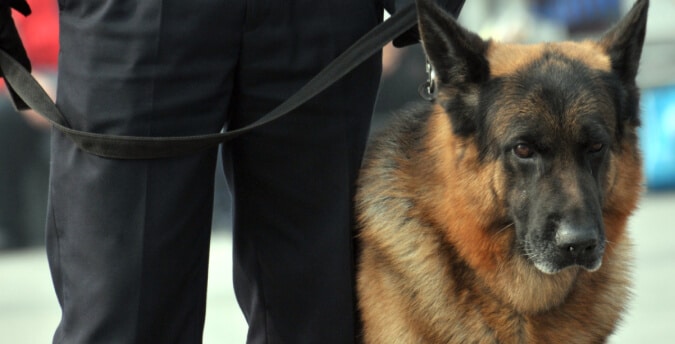6 Tips on How to Handle a Dominant Dog

A dominant, aggressive dog is a common problem and not one that should be ignored. If your dog’s behavior is an extreme case, it’s best to leave it to the professionals. Otherwise, there are steps you can take as a dog owner to lessen the aggression.
TIPS ON HANDLING A DOMINANT DOG
1. Spay or neuter your dog to prevent sexually-based aggression
As a responsible pet owner, you should spay or neuter your dog. Not only does spaying and neutering prevent infections and cancers in dogs, but it also prevents sexually-based aggressive behavior. You should spay or neuter a dog as early as possible. For example, you should spay your female dog before her first heat.
2. Keep your dog distracted when you pass other dogs on a walk
You need to control a dog who barks or lunges after other dogs when you take it on a walk. Keep your dog distracted when you pass other dogs. For example, work on ways to get your dog to look at you when another dog is approaching and then reward your dog with treats when it does look at you. Pay attention to your surroundings and keep your distance from other dogs. Get a strong dog leash that isn’t retractable to keep your pup close, too.
3. Incorporate “time outs”
“Time out,” a concept of separating a person until they calm down, is often done with children. However, the method works with dominant dogs, as well. Designate a place where your dog can go when it is aggressive. When your dog is aggressive, give the dog a warning. For example, you can scream “enough.” If your dog immediately stops being aggressive, tell the dog “thank you.” If the dog gets aggressive again, say “time out.” Gently bring the dog to the designated place. Use a leash if need be. Leave the dog in the designated area for five minutes. If the dog is calm, release the dog. If not, keep it there until it is composed.
4. Examine your dog’s diet
Just like certain foods humans eat can upset one’s system, so can certain foods that a dog may eat. An improper diet can lead to inappropriate behavior. Look at the diet of your dog and consult with your vet to determine if you should introduce healthier options.
5. Pinpoint the aggressors
The most important thing you can do to reduce dominance in a dog is to pinpoint the aggressors. What is making your dog aggressive? Determine if it is something you can remove or if you’ll need to train your dog to respond to it differently.
6. Take your dog to obedience classes
If you have the time and the funds, bringing your dog to obedience classes is one of the best things you can do. There is where you will find professional trainers who can pinpoint the problem and quickly work to find a solution. Professional classes become even more important if you have a dog that is severely dominant and will not respond to any behavior modifications that you try to introduce. Keep in mind that a severely dominant dog is a serious problem not only for you but it represents a safety concern for other people and other dogs.
Dominant dogs can be handled in various ways once you understand what is causing the problem. Classes, as well as consultations with your vet, are excellent ways to deal with a dominant dog when DIY methods are not adequate. Keep in mind that certain breeds are naturally more dominant than other breeds. Therefore, when acquiring a dog, it is imperative that you keep the nature of the breed in mind.
